Our editors independently select these products. Making a purchase through our links may earn Well+Good a commission
17 Perennial Herbs To Grow for Your Own Endless Supply
Looking to start an herb garden? Discover the best perennial herbs to plant and how to care for them year after year.
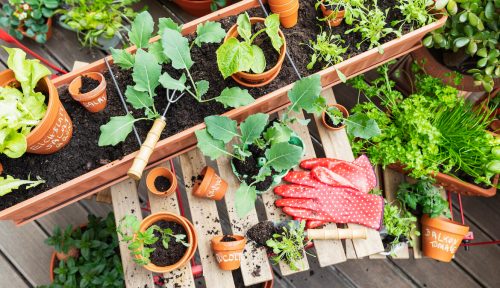
Planting perennial herbs in the garden means you’ll never have to spend another $2.99 at the grocery store for just a handful of leaves. And to avoid an unintentionally bland diet—or, worse, a mistakenly flavorless meal for guests—it’s important to know which edible herbs will add the most versatility to your kitchen.
Experts in This Article
clinical dietitian and founder of Chelsea Nutrition
professional organic farmer, certified permaculture teacher, and co-founder of Green Valley Gardens
chief gardener at Ferry-Morse Seed Company
Ahead, find out what we learned from gardening experts and dietitians about the best perennial herbs you can plant in your garden, on your balcony, or next to your kitchen sink.
What are perennial herbs?
Perennial herbs are herbs that, once planted, return year after year under favorable climate conditions. While annual herbs die and need to be replanted every year, perennial herbs will continue to come back after the winter months have passed.
“Perennial herbs are great to add to your garden if you love to cook and want to have a reliable supply that grows back every year,” says Rebecca Sears, chief gardening guru at Ferry-Morse.
While some perennial herbs will only come back in warmer climates, don’t fret. Nowadays, plenty of innovative gardening solutions exist so that you can mimic the necessary climate from the comfort of a protected counter or indoor window sill.
Of course, not all perennial herbs are alike. Depending on the variety, Sears says that light exposure and watering requirements will vary. “Herbs like thyme, oregano, mint, and rosemary need full sun, whereas lavender and sage will do just fine in partial shade,” she says, as an example, noting that seed packets show the specific directions for each type of perennial herb. “How often you water your herbs also depends on the variety—chives and mint should be watered one to two times per week, but thyme and rosemary don’t need as much hydration once established (once every 10 to 15 days is plenty).”
Care instructions aside, Sears says that adding perennial herbs to your garden will transform the dishes you cook. “What I love about homegrown herbs is the aroma—dried or ground herbs [like those that are store-bought] lose their punch over time,” she says. “Cooking with fresh herbs provides wonderful aromatics and a clean, pure flavor. [Quite simply,] fresh herbs elevate any meal.”
Beyond the scent of edible herbs, their flavor—and nutrition—is unmatched. “As I always tell my clients, herbs are one of the most powerful sources of antioxidants,” says New York City-based dietitian Jennifer Maeng, MS, RDN. “Herbs also add so much flavor to food so if you are trying to cut down on salt, try flavoring your food with fresh herbs. Thankfully, herbs are really easy to grow especially by your sunny windowsill. All you need to do is water them regularly.”
According to organic farmer, permaculturist, and Green Valley Gardens co-founder Matthew Williams, perennial herbs are the culinary gifts that keeps on giving. Most common perennial herbs are easy to propagate, AKA grow an entirely new plant from a small leaf or root cutting. After planting your own herb garden, you can cultivate endless new plants to share with your loved ones.
Ready to grow your own? Keep reading to learn more about perennial herbs, including which to add to your garden. The below list of herbs includes delicious cooking companions, plants with holistic healing properties, and fragrant options that can brighten your home from within.
17 perennial herbs that come back year after year
1. Parsley
Whether you put it on top of your potatoes or chopped in your salad, parsley packs a flavorful punch. But that’s not all! “Parsley is high in vitamin C and K,” Maeng says. “It’s great in not just Italian foods but to add to salad, make sauces with, and to garnish.” Much like its close relative, dill, that’s packed with benefits, too.
The health benefits of parsley don’t stop here. Parsley leaves are packed with a flavanol called myricetin that has been positively linked to breast and skin cancer prevention and is purported to improve insulin resistance for diabetics.
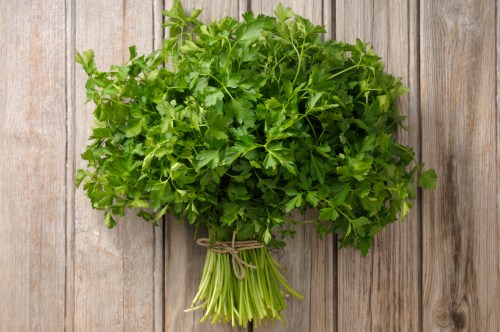
Bonnie Plants, Italian Parsley Plant 2-Pack — $13.00
2. Cilantro
Delicious on tacos, in salsa, and on top of grain bowls, cilantro is an especially popular herb to pair with Mexican food. “Cilantro provides an excellent source of vitamin K and C, as well as vitamin A,” says Maeng. “Cilantro also has many different types of antioxidants, one of which is polyphenols, which is responsible for reducing inflammation and preventing cell damage.”
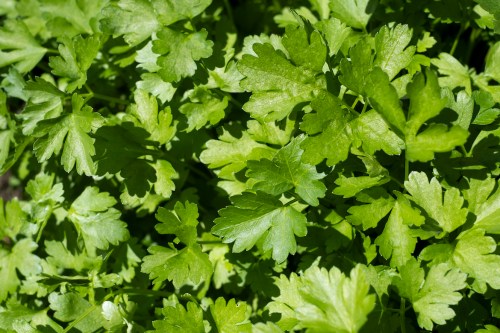
Bonnie Plants, Cilantro Plant 2-Pack — $18.00
3. Lavender
Stress much? Incorporate some lavender in your garden. The scent of this flowering herb has aromatherapeutic qualities that can help you relax, thanks in part to linalool, a terpene that’s also found in cannabis. Lavender essential oil is antibacterial, which makes it great for treating pimples.
One of Williams’ favorite herbs to grow, fresh lavender is delicious when added to fresh coffee grounds and herbal teas (and really shines when paired with local honey).
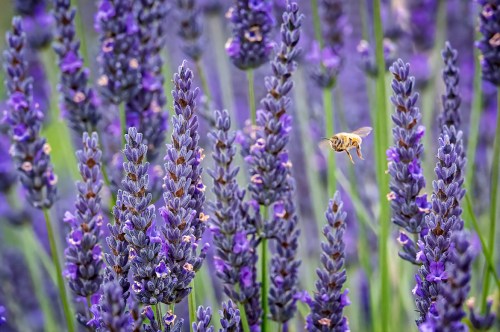
Bonnie Plants, Lavender Plant 2-Pack — $18.00
4. Mint
Perhaps the most recognizable (and widely-used) plant in our list of herbs is mint. Great in foods and drinks alike, mint can be used in various ways in the kitchen.
“Mint is a source of vitamin A, as well as folate and iron,” says Maeng. “Menthol in mint tea, in particular, can be helpful when experiencing menstrual cramps during your period due to its direct impact on a receptor called Transient Receptor Potential Melastatin–8 (TRPM8).”
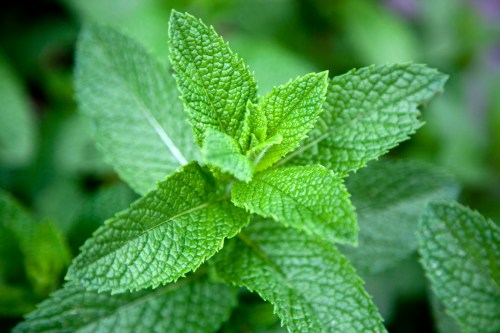
Bonnie Plants, Sweet Mint Plant — $10.00
5. Rosemary
Rosemary is an incredibly versatile anti-inflammatory herb. It’s yummy in savory and sweet dishes alike, and can add depth to craft mocktails. It’s packed with the brain-boosting antioxidant apigenin, an flavinoid that has been linked to improved cognitive function.
“Rosemary oil is high in antioxidants but more interestingly a few small studies showed that rosemary oil, when inhaled, can improve alertness without side effects or complications,” Maeng adds, noting that rosemary oil can help shift workers stay alert. “Rosemary pairs very well with meat dishes, sauces, and dressings. If you have any leftover rosemary sprigs, you can either freeze them or use them as an air freshener!”

Bonnie Plants, Rosemary Plant 2-Pack — $14.00
6. Sage
For an earthy, savory effect, Sears recommends adding sage to your kitchen garden. “My favorite quick and easy weeknight dinner is mushroom ravioli tossed in a brown butter sage sauce,” she shares. “This classic Northern Italian sauce takes five minutes to prepare and the fresh sage sizzled in the butter smells and tastes amazing. Don’t forget to grate a little bit of Parmigiano Reggiano cheese on top!”
Flavor aside, Maeng says that sage is high in antioxidants and minerals, such as magnesium, copper, and zinc. “In eastern medicine, sage tea is used to treat coughs as they believe that it is an expectorant,” she adds. “Personally, I use sage to make this fragrant and delicious fried sage salsa verde.”

Bonnie Plants, Garden Sage Plant — $6.00
7. Thyme
Although most people don’t think of thyme when they think of mint (and its flavor profile), Maeng points out that thyme is a perennial herb that belongs to the mint family. “Thymol found in thyme is known for its antiviral, antibacterial, and antifungal properties,” she adds, noting that thyme oil is often used to prevent gingivitis for this reason. “I love using thyme in many dishes I make at home from dressings to sauces but it pairs especially well with seafood.”
Sears adds to this, noting that thyme is a great perennial herb for marinades. “I chop some up, mix it with olive oil and salt and pepper, then toss with cubed butternut squash,” she says. “Spread out the squash on a baking sheet and roast at 400 degrees Fahrenheit for about 35 minutes until golden and tender. Divine.”
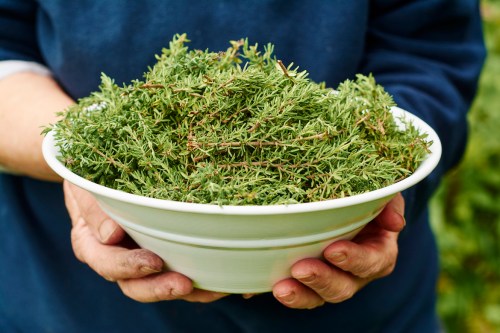
Bonnie Plants, German Thyme Plant 2-Pack — $13.00
8. Holy basil
Holy basil, otherwise known as Tulsi, is especially popular in Asian dishes, particularly because of its warm, sweet flavor. “Basil is high in many vitamins and minerals but it is especially abundant in antioxidants such as lutein and zeaxanthin,” Maeng says. “Lutein belongs to the carotenoid group which is essential for eye health.”
Research has shown that holy basil’s chemical makeup can boost your brain health, too.
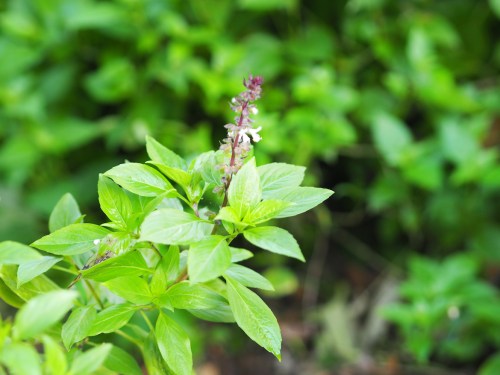
Yorker, Holy Basil Plant 2-Pack — $22.00
9. Oregano
Aside from being a delicious addition for pasta sauces, marinades, and fresh breads, oregano provides a wide variety of skin benefits. When applied topically, a dash or two of the spice can help reduce inflammation, encourage collagen production, and even repel pesky insects.
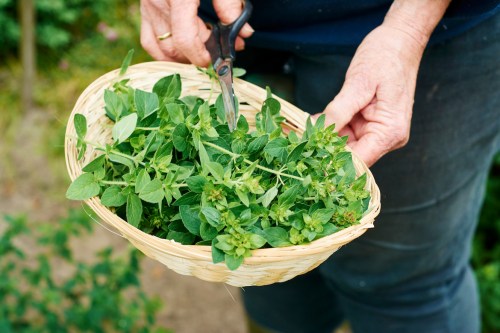
Bonnie Plants, Greek Oregano Plant 2-Pack — $13.00
10. Mexican mint marigold
Try saying “Mexican mint marigold” three times fast—we bet you can’t.
Also known as Mexican tarragon, this vibrant yellow plant has become one of Williams’ favorite edible herbs to grow and cook with. It’s anise-like flavor mimics French tarragon, but withstands warmer climates better. Historically this flowering herb has been used in traditional Mexican cultures to treat stomach woes and the common cold.
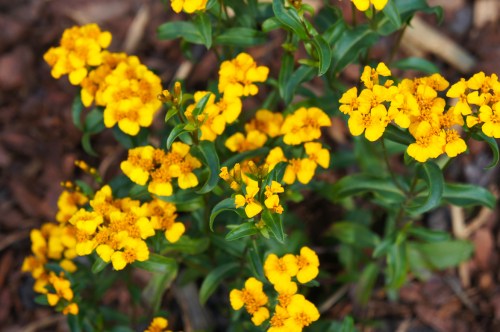
MARSGardens, Mexican Mint Marigold Plant — $9.00
11. Chives
You can sprinkle them on potatoes, in omelets, on salads, and in sauces—no matter how you use them, chives help pump up the flavor of many popular dishes. Sears says one of her favorite ways to use chives is when grilling fish and whipping up a homemade dumpling sauce.

Bonnie Plants, Chives Plant 2-Pack — $13.00
12. Lemon verbena
Fragrant and uplifting, lemon verbena yields a number of health benefits that make it a great herb for emotional healing and active recovery. Lemon verbena is frequently used for cooking in Ikaria, Greece, one of the Blue Zones of the world where people live the longest. Just like oregano, sage, thyme, and basil, lemon verbena is high in gut-boosting polyphenols. Its soothing aroma and high melatonin content makes it a stress-relieving addition to herbal teas.
A recent study revealed the herb’s positive impact on oxidative stress and inflammation. According to the study, ingesting 400mg of lemon verbena extract resulted in less muscle strength loss and recovery times when compared to the placebo group.
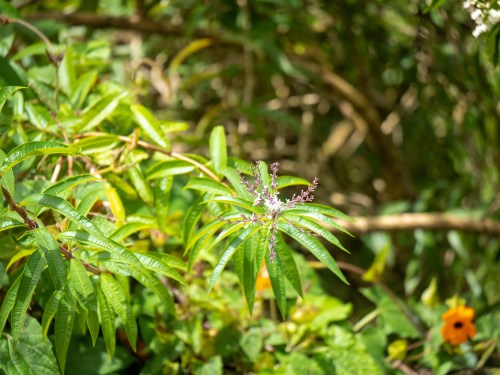
DoseofSucculents, Lemon Verbena Plant — $9.00
13. Fennel
The longevity benefits of fennel are numerous. Used in soups, stews, meat seasoning mixes, and salads in Sardinia, Italy, fennel is packed with antioxidants. The nitrates in fennel also give it vasodilatory and vasoprotective properties: In other words, adding fennel into your diet can help lower high blood pressure.
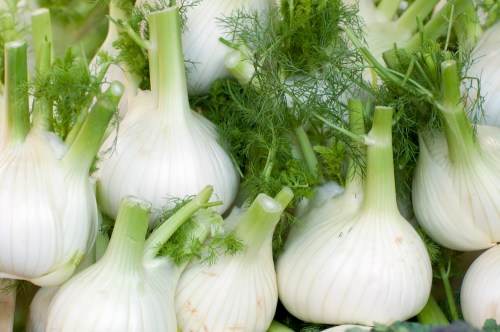
DoseofSucculents, Fennel Plant — $10.00
14. Echinacea
Echinacea is a holistic treatment superhero. This flowering herb’s anti-inflammatory properties make it a popular choice for topical skincare products, and historically has been used to treat symptoms of the common cold like coughing and sore throat (though clinical research is still inconclusive). Studies have also shown the plant’s bacteria-fighting properties, making it a natural alternative for certain antibiotics.
Bonus: It’s really pretty.
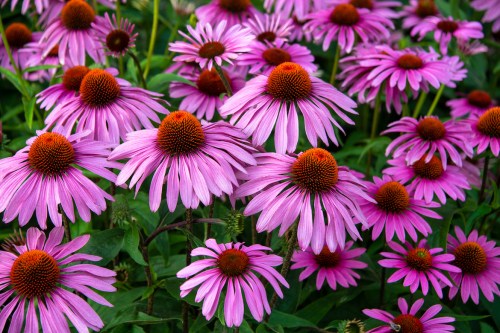
PowWow, Wild Berry Echinacea Plant — $20.00
15. Anise hyssop
Though it closely resembles lavender, anise hyssop is actually a member of the mint family and has a taste similar to French tarragon. Indigenous nations of North America used this purple herb as a natural breath freshener. Great in teas, soaps, and syrups, this perennial herb is also a great way to help #savethebees, since they provide tons of nectar for pollinators in the summer.
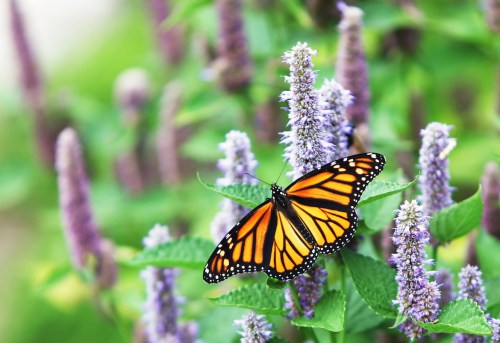
ZenobiasGarden, Anise Hyssop Plant — $10.00
16. Aloe vera
This vitamin-packed equatorial succulent isn’t just great at treating burns. Don’t get us wrong, the skin benefits of aloe vera are definitely aplenty—it’s an incredible moisturizer, can help fade dark spots, support aging skin, and even help treat acne—but its powers go beyond skin deep.
Aloe vera juice is great for digestion and helps maintain the “good” bacteria that lives in your gut. Its alkaline properties help relieve heartburn, and studies have shown that it can even help reduce blood sugar levels in diabetic patients.

Costa Farms, Aloe Vera Plant — $15.00
17. Chamomile
Chamomile is one of the best herbs for indigestion thanks to its active ingredient bisabolol. This anti-inflammatory oil helps soothe the stomach and enable the lining of our gut muscles to relax.
“Chamomile helps with treating diarrhea, nausea, gas, and stomach ulcers,” Dr. Amber O’Brien, MD, previously shared with Well+Good.
Just like rosemary, chamomile tea contains the sleep-promoting flavonoid apiginen, which explains why it’s been used as a sleep remedy for hundreds of years (with the research to back it up).
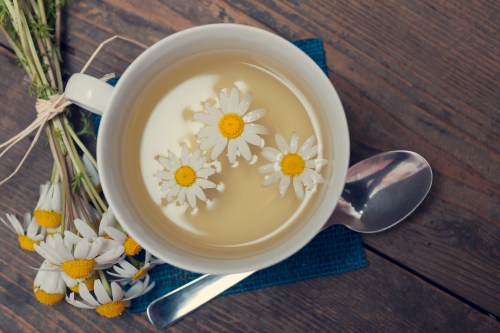
AugustBreezeFarm, Chamomile Plant — $8.00
Perennial herb FAQs
Is basil annual or perennial?
Yes and no. The most common kind of basil, sweet basil, is technically an annual, not a perennial. Some types of basilare perennials, though, and will come back year after year.
Does mint grow back every year?
Yes! Mint, like more perennials, will come back year after year, if the climate conditions are right.
What herbs will come back every year?
All perennial herbs—see list above—will survive and come back for two or more years as long as the climate they’re in is well-suited for them.
How long do perennial herbs live?
Unlike annual herbs, perennial herbs do not need to be planted every year, and under the right circumstances, will thrive for two or more years.
Herbaceous perennials like mint have stems that die every winter and regrow in the spring from the plant’s crown, while woody perennials, like rosemary, withstand the cold temperatures of winter through to spring.
What herbs are perennial in my zone?
Before choosing which herbs to grow in your garden, use this site from the United States Department of Agriculture to find out which hardiness zone you live in. Hardiness zones, or planting zones, are determined by the coldest and hottest temperatures in a given area, and can help you determine which plants have the best chance of surviving your city’s climate.
Wondering if a specific herb will prosper in your zone? This helpful page from Sunny Botanist contains an alphabetical list of herbs and the hardiness zone they correspond with.
If you find that an herb is just outside of your hardiness zone, don’t throw in the shovel just yet. According to Williams, you can work around hardiness zones by insulating your plants with tarps, using bricks to block cold winds, and create shady areas that will best support the plants outside of your zone. These protective measures create a microclimate that can support the herb’s lifespan.
“Push the envelope a little bit,” encourages Williams. “If you really want to grow something, try to grow it.”
What herbs will survive winter?
In short, it depends on where you live. Using the hardiness zones map as a guide, you can find the lowest temperature survivability of plants in relation to where you live. If you live in a northern area that sees harsher winters, try to stick to herbs that live in zones 1-4.
Among Williams’ favorite hardy herbs are mint, lavender, and oregano. These herbs thrive and survive in a variety of different zones and can withstand cold temperatures up to -25 degrees Fahrenheit.
What is the easiest herb to keep alive?
Hardy herbs that can withstand cold and hot temperatures will be easier to keep alive for years on end. If it’s hard for you to remember to water your plants (no judgment, promise), consider drought-resistant herbs like thyme, lavender, sage, and rosemary,
If you’re looking to incorporate more healthy meals into your diet, Williams says planting fresh herbs and vegetables is a great way to start. Having easy access to fresh, delicious herbs can make cooking more fun and less of a chore.
“Once you grow stuff, you don’t have any reason not to use it,” says Williams. “It’ll actually push you to start cooking more.”
Sign up for the Well+Good SHOP Newsletter
Get exclusive deals on wellness, beauty, fitness, and food products that have been hand-picked by our editors.
Got it, you've been added to our email list.







